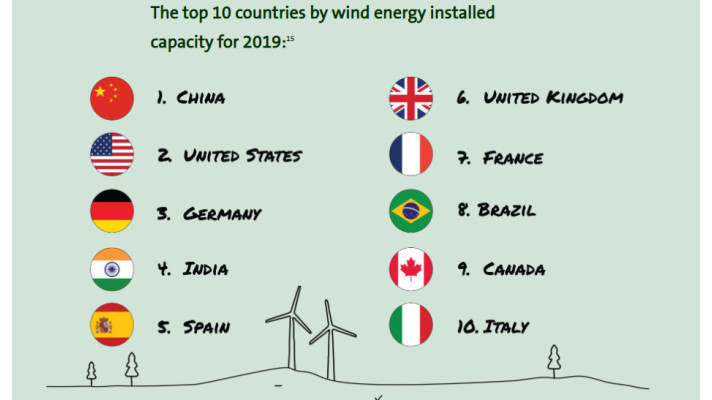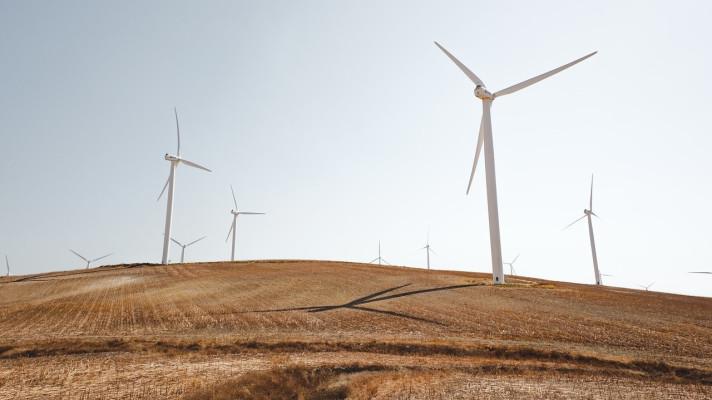The evolution of wind energy
Wind has powered sailboats and ships for over 5,500 years, however it wasn't until much later that man harnessed the power of the wind for even greater utility. Today, many countries build wind farms (a group of wind turbines in the same area) to generate electricity - there are onshore, offshore, airborne and near-shore wind farms.
How does it work?
Wind energy captures wind through turbines and windmills, which can be used to power machinery or generate electricity. There are two basic types of wind turbines; the more common horizontal axis (like a propeller) and the vertical axis (shaped like an egg-beater). The vertical axis turbine can capture wind energy from all directions.
Timeline of wind energy
500-900 AD.
The Persians (modern-day Iranians) developed the windmill to mill grain and pump water.1 This new wind-powered technology soon becomes widespread across Europe and Asia.
1300s.
The English develop tower mills, a tall brick or stone construction used in industry, e.g. sawmills.2 Also, during this period, the Dutch develop windpumps to drain water around the Rhine River Delta.3 Their design will inevitably become a national symbol.
1854.
American engineer and inventor, Daniel Halladay, manufactures the first commercial windmill in the United States.4 Halladay's new design allows the windmill to automatically turn to face changing wind directions. Also, around this time, steel blades replace wooden constructions.
1887.
Scottish electrical engineer, Professor James Blyth, builds the world's first electricity-generating windmill.5 Blyth's design is said to have powered his Scottish home for 25 years. One year later, American engineer, Charles Brush's company builds the brush wind turbine (a much bigger windmill) to generate electricity.6 In 1889, Brush sells his company to General Electric.
1890s.
Danish scientist, Poul la Cour, writes a textbook on wind turbine design.7 Many of his design points hold up today, including the best wind turbines for electricity generation have fewer blades (three or two).
1925.
French engineer, George Darrieus, patents the Darrieus Wind Turbine (a vertical-axis wind turbine).8 The unique design is coined the 'eggbeater windmill' due to its aesthetic. While they produce less energy than horizontal bladed turbines, the Darrieus Wind Turbine still has an application today.
1930s.
American brothers, Joe and Marcellus Jacobs, open a factory in Minneapolis. They sell small wind turbines, mostly to farmers to charge batteries and power lighting.9 This technology becomes commonplace across rural areas in the United States.
1941.
The world's first megawatt-sized wind turbine is manufactured in Vermont, US.10 The tow-bladed design is connected to the local electrical system.
1973.
The 1973 oil price crisis hits when foreign suppliers declare an oil embargo. This event amps up research into renewable energy sources like wind energy.
1980.
The world's first wind farm (20 turbines) opens in New Hampshire, United States.11
1991.
The world's first floating offshore wind farm opens in Vindeby, Denmark.12 Later that year, the UK's first onshore wind farm opens in Cornwall.12
2019.
Norwegian energy company, Equinor receives approval to build the world's largest planned floating offshore wind farm in the Tampen area of the North Sea.13
The future of wind energy
In the future, many experts estimate wind energy will be one of the cheapest electricity generating sources, even rivalling fossil fuels.14 Why? Because it's as cheap as coal, safe and easy to maintain.
According to the 2019 future of wind report, Asia will dominate the wind energy sector in 2050, followed by North America, Middle East and Africa, Europe, South America and Oceania.
More about evolution of renewable sources on https://www.comparethemarket.com.au/energy/history-renewable-energy/

Sep 28, 2020
https://www.comparethemarket.com
